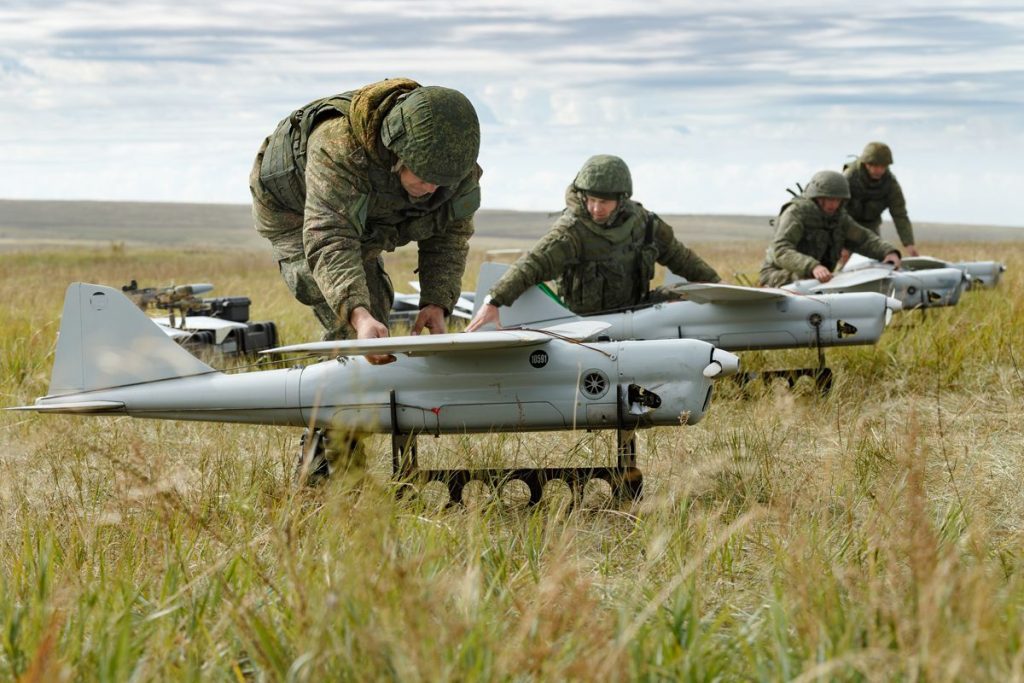Revealed: Inside Ukraine’s Tech Push To Counter Russian ‘Suicide’ Drone Threat

In a basement in downtown Kyiv late last month, away from prying eyes, hundreds of engineers and innovators met senior military officials to brainstorm ways to better neutralise the cheap Russian suicide drones that still devastate Ukrainian cities.
It was a rare, close-up glimpse into Ukraine’s technology arms race with Russia that draws on private sector innovation seeded with state venture capital, and which is pumping out thousands of combat drones in a booming wartime industry.
“The war today is technological, with changes in technology and on the battlefield happening every day,” Mykhailo Fedorov, Ukraine’s deputy prime minister and minister for digital transformations, said on the sidelines of the gathering.
Reuters was the only media outfit invited to the event, where high-ranking army officials and ministers mingled with engineers and eccentric enthusiasts. One man arrived in shorts and a baseball cap with a large drone under his arm.
Organisers distributed $3 million in prize money among three teams of experts deemed to have presented the best drones or electronic warfare technology against Russia’s “Shahed”, drones of Iranian origin that cruise in swarms to their targets and detonate on impact.
In May, Russia attacked Ukraine with a record monthly total of more than 300 drones, official data shows, a challenge for planners anxious to protect energy supplies this winter. Last winter Russia tried to cripple the power grid with air strikes.
“We want to prepare for the… next winter to respond to these challenges,” Deputy Prime Minister Oleksandr Kubrakov said.
The Iranian drones fly so low that they can avoid detection by air defences, while their navigation systems are robust enough to make it hard to take them down with anti-drone electronic warfare weapons that disrupt radio frequencies.
The West has supplied sophisticated air defence systems to counter missile attacks, but taking down swarms of drones that cost $50,000 a piece with $1 million missiles is not ideal, officials say.
“That’s not profitable, so we need to constantly cut the cost of the tools we use to destroy Shaheds,” said Fedorov.
“We’re talking about detection (of drones) using acoustic as well as other means, and also about actual destruction.”
The event’s organisers asked Reuters not to disclose the surnames of participants for security reasons.
One of them, Oleksandr, said his team was presenting a “quadrocopter” that has wings in addition to being propeller-powered. He said it could fly much faster and longer than other drones.
“It’ll be a drone that will… take off vertically to intercept or catch up with drones, shoot them down or jam them,” he said.
Another participant, Yuriy, an engineer and deputy head of a Ukrainian company, said his team presented designs for new anti-drone electronic warfare systems that would be more effective against Shaheds.
‘WAR OF DRONES’
Drones have been used widely in wars in Yemen, Syria and Nagorno-Karabakh, but never more than in Ukraine, officials say.
“This really is an unprecedented war of drones,” Fedorov said, adding that Ukraine’s military technology innovation had boomed since Russia’s invasion.
Ukraine launched a crowdfunding project last year aimed at creating an “Army of Drones” that has grown into a state programme covering everything from the production of uncrewed aerial vehicles to the training of drone pilots.
“A few months after the full-scale invasion began, everyone realized that the most effective way to conduct reconnaissance and defeat the enemy was uncrewed aerial vehicles,” said brigadier general Yurii Shchyhol.
Shchyhol, who oversees procurement for the state programme, said it had purchased 15,000 drones so far, with more coming in via the Defence Ministry and others being supplied by foreign assistance and volunteers.
The total number of drones used by Ukraine on the battlefield is not known.
“Our goal this year is to buy more than 200,000 strike and large reconnaissance drones… We will buy as many drones as are available for purchase on the market,” Shchyhol said.
Fedorov said drone production was now taking place all over Ukraine despite the threat of Russian air strikes, adding that manufacturers had been told to spread work over different sites and to use bomb shelters for parts of the production process.
“We see that today this approach works and all producers continue working and missiles are not hitting production. They (strikes) do happen, but not on such a scale,” he said.
More than 80% of procured drones are Ukrainian-made and assembled in Ukraine, Fedorov added.
Anatoliy Khrapchynskyi, who works for a firm developing electronic warfare technology, contrasted Ukraine’s approach to technological innovation with Russia’s.
While Russia’s approach is top-down and dominated by state organisations, he said, Ukraine’s is driven by the private sector and involves many smaller-sized companies.
“There were seven companies that could sell drones to the state when we began this project last year. Today it’s 40 and it will be 50 by the end of the year,” said Fedorov.
He said state venture capital was helping to expand domestic production and that Ukraine had an edge over Russia because it could share technology with foreign partners and did not have to worry about sanctions.
“Thanks to the funds, companies are starting to localise production. Today we do buy parts across the world, including in China. But localisation is gradually happening,” Fedorov said.





